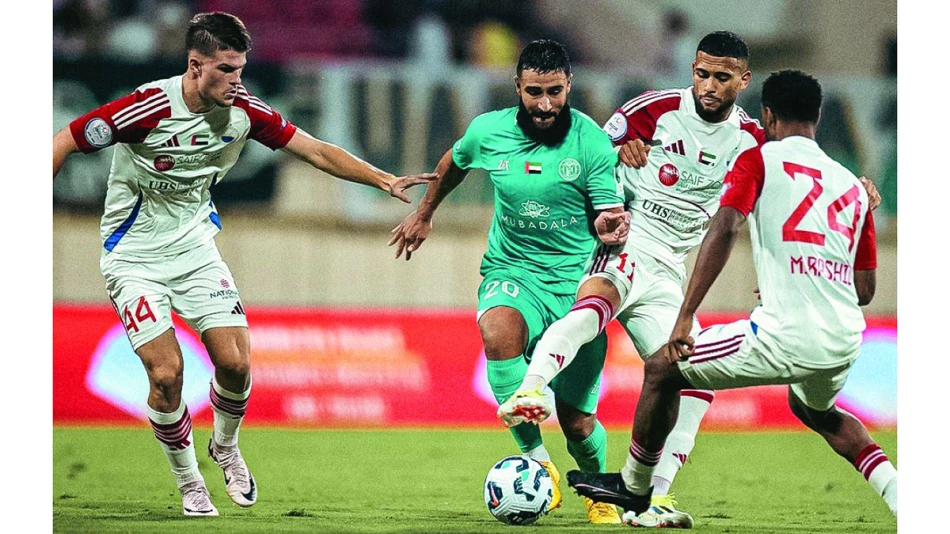
Emirati League Attracts Global Superstars: Balancing Dreams and Reality
UAE Football League's Star-Signing Initiative Sparks Debate Over Financial Controls
The UAE Professional League's new financial support program for clubs seeking to attract global football stars has divided sports analysts and former players, who warn that without strict criteria and oversight, the initiative could trigger financial chaos while failing to deliver meaningful improvements to the domestic competition.
The Initiative: Ambitious Goals, Unclear Framework
The Professional League announced its financial backing program alongside the draws for the ADNOC Pro League and Abu Dhabi Islamic Bank Cup. The initiative aims to help clubs secure deals with internationally renowned players who can elevate both the technical quality and fan appeal of Emirati football.
However, sports figures are calling for comprehensive stakeholder involvement—including sports leadership, club management, and sponsors—to establish a rigorous regulatory framework before implementation begins.
Learning from Past Mistakes
When Star Power Falls Short
Sports analyst Khalid Obeid highlighted the need for stringent selection criteria, pointing to Spanish legend Andrés Iniesta's underwhelming stint with Emirates Club as a cautionary tale. "It was clear the player came to finish his career in a less competitive environment without leaving any memorable technical impact," Obeid noted.
He emphasized that successful recruitment requires evaluating multiple factors: the player's actual age at signing, international appearances, European or Latin American playing history, recent performance levels, and previous club affiliations.
Success Stories Worth Replicating
The UAE league has seen notable successes with global stars. Diego Maradona's 2011 coaching role with Al Wasl brought unprecedented international media attention, particularly from Latin American press. Italian legends Luca Toni and Fabio Cannavaro also left positive impressions during their UAE stints, demonstrating that strategic signings can deliver results.
Systemic Issues Beyond Star Signings
International football lecturer Omar Al Hammadi identified a deeper problem: UAE clubs have struggled with consistent foreign player recruitment since the professional league's inception. The pattern of signing players in summer transfer windows only to release them by winter—or vice versa—reveals weak technical evaluation systems and absent strategic planning within club management.
This volatility has strained budgets, prevented the development of stable, competitive squads, and created an unstable technical environment that hampers local player development.
Economic Realities and Market Dynamics
Former international player Youssef Abdulaziz argued that the initiative aligns with global football trends, where star players have become decisive factors technically, commercially, and economically. However, he stressed that real value extends beyond on-field performance to include potential financial returns through strategic buying and selling operations.
The UAE league was historically pioneering in the Arab and Asian regions for attracting global talent, with clubs like Al Jazira signing George Weah, Al Dhafra recruiting Abedi Pelé, and Shabab Al Ahli bringing in Ali Daei.
Competitive Advantages and Market Position
The UAE possesses unique selling points that could make this initiative successful where others have failed. The country's global reputation for security, stability, and quality of life creates an attractive destination for stars seeking a comprehensive professional environment both on and off the pitch.
This positions the ADNOC Pro League favorably compared to other emerging football markets that may offer similar financial packages but lack the UAE's broader lifestyle appeal.
The Path Forward: Structure Over Spectacle
Industry experts agree that attracting stars should be a means to broader development rather than an end goal. The initiative's success depends on converting high-profile signings into genuine development tools that raise overall performance standards, improve competition quality, and enhance local player capabilities.
Key criteria suggested include requiring players to be active internationals representing top-50 FIFA-ranked nations, with recent competitive experience at elite levels. Without such frameworks, the UAE risks repeating expensive mistakes while missing opportunities to genuinely elevate its football landscape.
The initiative represents a critical juncture for Emirati football—one that could either catalyze sustainable growth or become another costly experiment in pursuit of quick glory.
Most Viewed News

 Sara Khaled
Sara Khaled






